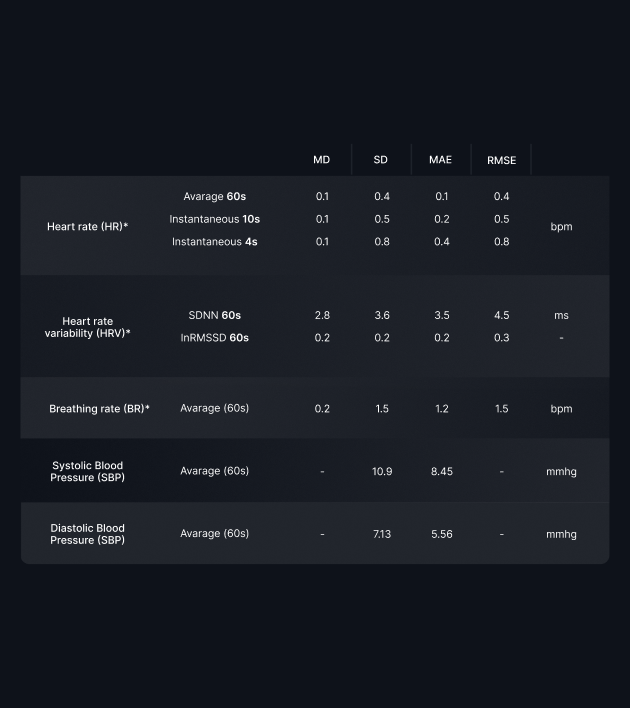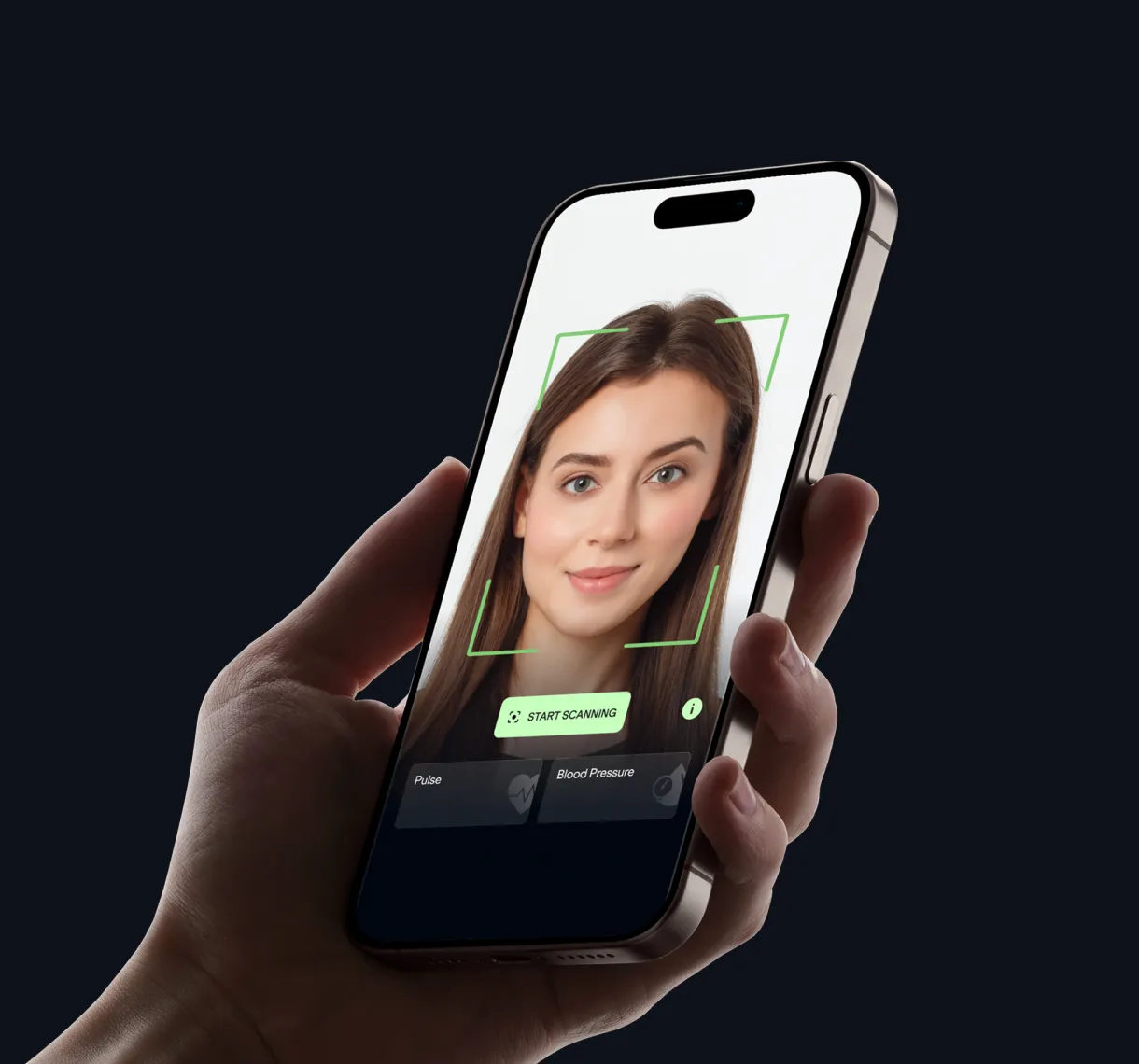Track 30+ health markers through a face scan using any camera
AI health monitoring designed for healthcare and insurance leaders.
Camera-based face scan
Full scan in 30 seconds
Clinically validated
Integrates into any mobile or web app
AI health monitoring designed for healthcare and insurance leaders.
Camera-based face scan
Full scan in 30 seconds
Clinically validated
Integrates into any mobile or web app


Trusted by leading health & insurance innovators

















































Measure health markers like blood pressure, BMI, heart rate (HR), heart rate variability (HRV) and more in just 60 seconds with face scan health assessment.



Computer Vision and AI analyzes various bio-signals in the real-time only with a camera feed. No user information required.

The technology has undergone thorough clinical validation to meet the requirements for medical device certification. With consistent performance and high measurement precision, Shen.AI is designed to deliver results you can trust.

Delivers accurate results for all skin tones, works with any camera, and remains reliable even in poor light condition.

With Shen AI users get real-time insights into 30+ health markers in under a minute—no wearables, no extra steps. The process is quick, interactive, and designed to feel effortless from start to finish.

Creates unique 3D model of your face for accurate health measurements.
Reveals detailed facial data for more accurate heath monitoring
Detects tiny facial movements that go unnoticed by the human eye.
Tracks the flow and pulses of blood beneath your skin.




Whether you're in telehealth, remote patient monitoring, corporate wellness, fitness, or insurance, our technology gives you a competitive edge.
Our Multimodal Sensing Engine uses rPPG, enhancing signal quality by neural analysis of multiple light wavelengths, ensuring accurate vital sign detection across all Fitzpatrick skin tones.
Shen AI leverages the latest scientific advancements, including rPPG developed in collaboration with researchers.





Shen AI is built on advanced AI and insights from a diverse dataset of 500,000 people.
Real-time camera processing runs 100% on the user’s device, with no cloud dependency. AI-driven video analysis ensures precise performance in any conditions.
Real-world applications, proven impact. See how our AI adapts to diverse industries and user needs.
Some of the success stories from our respected clients. What to expect when you choose Shen AI
Shen AI integrates quickly and efficiently into your existing app, without disrupting your user experience or design.
Within a few days you can enable AI health monitoring of 30+ vital signs—no external devices or wearables required.
You have full control over your data. Easily integrate it into your systems to enhance customer profiles or streamline any workflow.
We process everything on the user's device, inside your application. We don’t send or process any data in the cloud.
FHIR API enabled for fast, secure and scalable integration into your EHR.


Start transforming healthcare today. Partner with us to integrate cutting-edge AI for accurate, reliable health insights.
Everything you need to know about the product and billing.
Shen AI uses remote photoplethysmography (rPPG) and advanced AI to track over 30 health markers, including blood pressure and heart rate or BMI, through a smartphone’s camera. This contactless method eliminates the need for additional hardware.
Shen AI’s accuracy is clinically validated and comparable to traditional devices, including cuff-based blood pressure monitors. For HR, Shen AI delivers results with under 0.5 bpm error level. Our AI is trained on over 7 million data points, ensuring precise readings across various environments and users.
First readings – of Heart Rate and BMI – are available within just 5 seconds. The other indices are available in 30 seconds.
Yes, Shen AI’s Multimodal Sensing Engine ensures reliable readings for all skin tones and lighting environments, making it inclusive and adaptable.
Shen AI processes all data directly on the device using edge computing, ensuring no sensitive information is sent to the cloud.
Shen AI’s SDK offers seamless integration with web and mobile apps, with support for various frameworks like Flutter or React Native. You can manage your integration through our Admin Portal and have all documentation available.
Yes, the Shen AI SDK is highly customizable. It allows seamless integration into your existing platforms while offering the flexibility to adapt the interface to match your brand. Key customization options include UI personalization and localization support.
Shen AI comes with FHIR API, making it easy to integrate with existing healthcare or insurance systems.